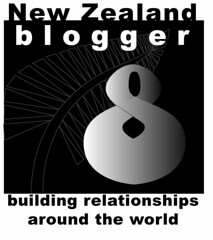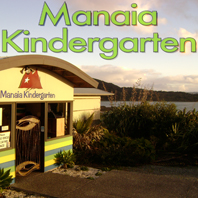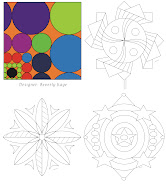I really enjoy dialogue that comes from sharing one’s ideas online. This post is a continuation of the dialogue started in - What makes a great teacher? (13 April 2009)
Further on that subject, there have been some interesting responses that have taken me once again on journeys of discovery.
Partnership
The first, from Ann, who commented on the ICT ECE PL Café. Ann submitted this quote
“When we as teachers recognize that we are partners with our students in life's long and complex journey,…
- when we begin to treat them with the dignity and respect they deserve for simply being…
- then we are on the road to becoming worthy teachers.
It is just that simple - and just that difficult.”
I love the description of ‘life’s long and complex journey’. It reveals the depth of the journey our children/students are undertaking, as well as the exciting prospects education and life have to offer.
To be partners with our children/students and treat them with dignity and respect ‘ is just that simple - and just that difficult’. I believe this captures the earnestness of educators as well as the shear buzz for educators.
Creativity and Professional Judgment
The next day, Elaine's comment led me to Bruce Hammond’s blog and his discussion on Creative Thinking. His blog post takes a look at Elwyn Richardson’s pioneering thoughts. In Hammond's post he reflects on teachers being creative educators, and the universality of creativity. We need to be creative in education whatever tools we have at our disposal… (pencil, printing press, technology) Bruce Hammond goes on to say…
“Forget the research and current conformist 'best practice',
go back and see what teachers like Elwyn did….
By all means be 'informed' by research but not 'led';
we need to use professional judgement
you ought to know your classroom best…
We need to be more concerned about creating our own ever changing 'best practices'.”
In conclusion
As great teachers we need to be creative in our own ‘best practice’ in partnership with the holistic individuals we find ourselves linked with for some small part of their (and our) long and complex journey of learning.
Readings supporting this post:
Leading and Learning – Bruce Hammond
Ann’s quote is from Awake Magazine. This is an interesting source for educational theory, however if we are to be creative and holistic in our approach to education and use our professional judgment then we open up a world of resource and reference material worth considering.
Ann’s quote went on to refer to a statement by William Ayers
"We must find a better way, a way that builds on the strengths, experiences, skills and abilities... I am reminded of the plea of a Native American parent whose five-year-old son had been labeled a 'slow learner': 'Wind-Wolf' knows the names and migration patterns of more than forty birds. He knows there are thirteen tail feathers on a perfectly balanced eagle. What he needs is a teacher who knows his full measure.”
You might be interested to research William Ayers – another interesting character, on YouTube.
DEREK’S BLOG HAS MOVED
6 years ago















2 comments:
Hi Beverly,
I really am passionate about not interfering. Yes, you read that right! One of the greatest skills one can have as a facilitator is to know when to participate in someone's learning journey, and when to back off.
Creativity, particularly in the adult/child relationship, can blossom when the adult takes a back seat.
Hey Tim - thanks for your comments. I marvel at the observations I make when I take a 'back seat' and watch children self evaluate... They can teach us so much when we support them rather than give them the 'answers'.
Love your blog btw
Post a Comment